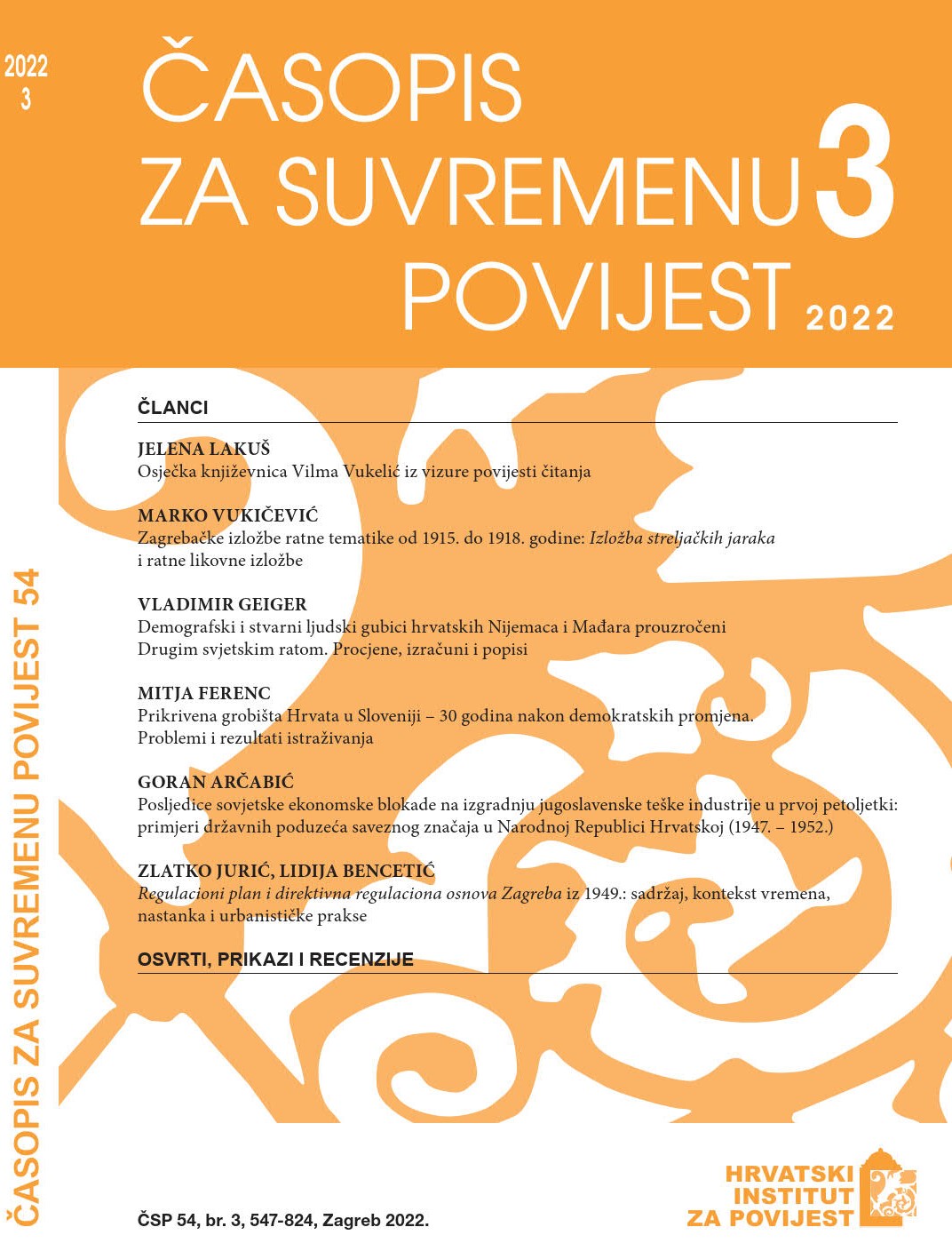The Urban Regulatory Plan and Directive Regulatory Basis of Zagreb of 1949: Its Content and Temporal, Creation, and Urban Planning Practice Context
DOI:
https://doi.org/10.22586/csp.v54i3.22259Keywords:
Zagreb; Croatia; Vlado Antolić; Urban Regulatory Plan and Directive Regulatory Basis of Zagreb (1949); urban planning; master plansAbstract
The Urban Regulatory Plan and Directive Regulatory Basis of Zagreb (DRB) of 1949 was the city’s first urban development proposition after World War II. The chief authors of the document were Vlado Antolić and his colleagues at the Urban Planning Institute of Croatia. The document was the conceptual and practical continuation of the pre-war Zagreb City Master Plan. These plans are linked through the key person of Vlado Antolić and his colleagues, Josip Seissel and Stjepan Hribar. The Zagreb City Master Plan of 1932/1940 and the DRB of 1939 are a rare example of continuity in urban planning that happened despite the great social and political changes that had taken place in the meantime. The greatest contributions of the architect Antolić in the first phase of the DRB projection from 1947 to 1949 were the preservation of the continuity and the application of the basic urban planning ideas upon which the Master Plan of 1932/1940 had been built and his persistent professional struggle against the ad hoc urban planning advocated by politicians and the local administration. Despite political resistance, Antolić managed to apply modern urban planning theories such as zoning by usage because he succeeded in defining and placing industry in two existing, expanded industrial zones. Antolić was highly knowledgeable in the modern urban planning theories of high modernism, but also pragmatic and a realist. He studied the existing longitudinal expansion of the city, which is a consequence of the topography, extant traffic routes, and hydrography. In the urban planning solutions proposed in the DRB of 1949, he preferred cautious and realistic direction over heedless and unrealistic competition. The second phase of the DRB, from 1949 to 1953, is the best example of the complexity of the conditions in which Zagreb urban planners patiently introduced the basic ideas of high modernism.
Downloads
Published
How to Cite
Issue
Section
License
Copyright (c) 2022 authors and journal

This work is licensed under a Creative Commons Attribution-NonCommercial 4.0 International License.
Copyright holders are the publisher Croatian Institute of History and the authors. Journal of Contemporary History is an Open Access journal. Users are allowed to read, download, copy, redistribute, print, search and link to material, and alter, transform, or build upon the material, or use them for any other lawful purpose as long as they attribute the source in an appropriate manner according to the Creative Commons licence CC BY-NC. The papers published in Journal of Contemporary History can be deposited and self-archived in the institutional and thematic repositories providing the link to the journal's web pages and HRČAK. Journal does not charge article processing charges (APC). The editors assume no responsibility for statements of fact or opinion made by contributors.




